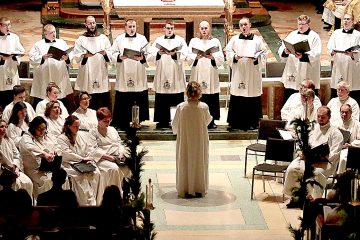Book Review: Sigrid Undset’s trilogy Kristin Lavransdatter

Two of the most intriguing women characters in all of world literature are the eponymous protagonists of Leo Tolstoy’s novel Anna Karenina (1878) and Sigrid Undset’s trilogy Kristin Lavransdatter (1920, ’21, and ’22). Both novels deal with similar themes: Christian faith, wealthy families, stormy marriages, and the cultural and social expectations of their respective times and places (19th-century Russia and 14th-century Norway, respectively). And the two novels’ plots, while diverging in important ways, share certain elements.
As to their main characters, both Anna and Kristin are intelligent, passionate, ambitious, and headstrong women. Both defy their times’ social and religious expectations to pursue their own independent paths. Both make serious mistakes along the way, alienating family and friends, and putting themselves in extremely difficult situations. Both pursue forbidden love, willing to turn their backs on the people who love them in search of what they mistakenly believe will make them happy. Even more important than the similarities, however, are the stark contrasts between these two great characters. Put simply, Anna Karenina is a tragic novel; Kristin Lavransdatter is a comic one. This judgment is drawn almost solely from the two title characters’ ultimate destinies. And, for my money, the latter is a much more satisfying story.
Thus, I am grateful to Cluny Media for the lovely new edition of Kristin Lavransdatter, available in three accessible volumes. It is important to note at the outset that this is not a new translation from Undset’s original Norwegian. Rather, it is a reprint of the original English translations by Charles Archer and J.S. Scott, first published from 1923 to 1927. This translation was superseded in some readers’ judgment by Tina Nunnally’s translation, published from 1997 to 2000. I prefer the Archer/Scott translation because they try to translate archaic Norwegian into roughly-equivalent period English. Put simply, the Cluny edition prefers terms like “thy, thou, and thine” over modern English equivalents. The result is a satisfying lyrical participation in the novel’s medieval setting.
Kristin Lavransdatter is the daughter of Lavrans, a wealthy and highly respected nobleman in rural Norway, and his wife, Ragnfrid, a pious and loving wife and mother. Ragnfrid suffers what we might now call PTSD after three infant sons’ deaths and her second daughter’s paralysis following a serious farm accident. This strains the relationship of Ragnfrid and Kristin, the latter gravitating more toward her father. As was custom, Kristin is betrothed to Simon Darre, a neighboring, wealthy nobleman’s son. But Kristin refuses to marry him, because she has fallen in love with the roguish, dashing, and morally suspect Erlend Niulaussen. After a period of obstinance and stubborn refusal, Kristin’s father reluctantly consents to her marriage to Erlend.
Much of the Kristin Lavransdatter trilogy is the narration of Kristin’s relationship with Erlend, his two children from a prior (unmarried) relationship, and their own seven sons. It is a romantic tale of personal betrayal, political intrigue, religious devotion, and financial hardship. But mostly, it is a novel about the title character’s heroic resiliency. Like Anna Karenina, Kristin is far from perfect. But unlike Anna’s story, Kristin’s story is ultimately one of redemptive suffering and the triumph of faith. The publication of this new edition is the perfect opportunity to read it for yourself! ✣
This article appeared in the October 2025 edition of The Catholic Telegraph Magazine. For your complimentary subscription, click here.














